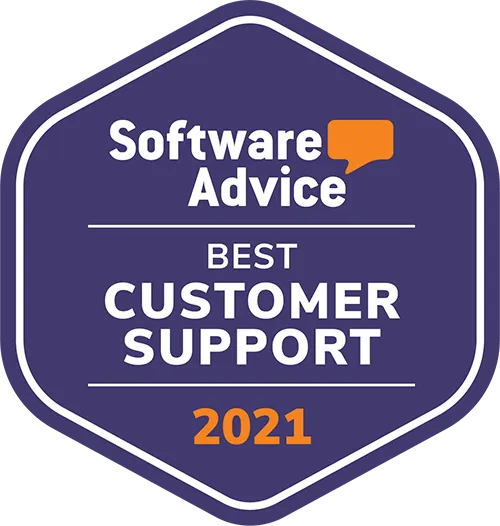It wasn’t a hard choice to select SmartSurvey. Not only did they understand what we were looking to achieve right from the start, they presented a solution that represented everything we needed.
What Is Customer Experience Management
What Is Customer Experience Management

Customer experience management, also known as CXM is the process of measuring and keeping track of customer experience. More specifically, CXM is the process that pays close attention to every interaction your customers have with your business - be it browsing your official website, reviewing your products or services on a forum, or commenting on your social media channels.
The goal of CXM is to find out exactly how your customers feel about your business at various touchpoints, analysing the incoming data, and employing methods to enhance customer experience throughout the customer journey. That way, your customers will experience less friction and have a more enjoyable time doing business with your brand.
To help you better understand customer experience and what you can do for your business to take advantage of this practice, in this article, we’re going to explore:
- The importance of customer experience management
- The evolution of customer experience management
- Key components of customer experience management
- Strategies for effective customer experience management
- How to measure the success of your customer experience management program
But before we do any of that, let’s first take a look at why customer experience management is so important in the first place.
The importance of customer experience management
Despite the proven benefits of CXM, over 60% of small businesses have never asked their customers for feedback. What’s more is that the large majority of businesses who did only asked their customers for feedback once every quarter or year.
This isn’t enough, which is especially true for larger businesses who deal with thousands (or more) customers every month. If you’d like to grasp just how important CXM is for your business, keep on reading as we explore a handful of reasons why CXM should be taken seriously, even if you’ve never thought about it before.
Enhance customer satisfaction
One of the primary goals of CXM activities is, of course, to improve customer experience. To do that, businesses can collect data through customer satisfaction (CSAT) surveys, identify areas for improvement, carry out the necessary changes, and compare the past and current data.
If the CSAT score is higher than what it was in the past, that is a clear sign that the brand’s CXM efforts are paying off and customers are becoming more satisfied.
Reduce churn rate
Oftentimes, it’s not the acquisition of new customers but rather the retention of existing ones that companies have a problem with. And one potential solution that will massively reduce the rate at which customers are churning is CXM.
When a business understands the needs and expectations of customers, they can adapt to provide their customers with exactly what they are looking for. And as long as customers are satisfied and get what they’re after, they will continue to come back time and time again.
Strengthen brand reputation
CXM is all about meeting your customer’s needs and keeping them satisfied. And when brands satisfy their customers, they almost always have a great reputation in the market.
The reason being is that when the large majority of customers are happy with the product or service they’re getting, they’re far more likely to recommend your brand to others and say something positive about your product or service. And over time, the impact of positive word-of-mouth will compound, resulting in stronger brand reputation - even among people who are yet to buy from you.
Increase customer lifetime value
Effective CXM results in increased customer satisfaction. And satisfied customers whose needs are met will almost never go through the effort of looking for an alternative to your product or service. So, rather than going to your competitors, your customers will keep coming back to spend their money with you, increasing the average customer lifetime value, resulting in higher profitability for your business.
The evolution of customer experience management
CXM has evolved a lot over the years. Initially, businesses who had a CXM strategy focused on reacting to the customer’s needs and finding ways to solve existing problems. And although this approach is better than doing nothing at all, it’s far from the best way to offer customers the best possible experience.
In addition to the above, the CXM processes of today are far more proactive. They focus on anticipating the customers’ ever evolving needs, identifying, and solving problems before they arise or affect a large number of customers.
To do that, modern-day businesses now leverage technologies such as SmartSurvey to create surveys and collect feedback from customers, analyse the incoming data, and see if there are any problems that may need to be addressed before they grow and affect customers at scale.
Key components of customer experience management
While the overall CXM process can look very different from company to company, there are a few crucial components that are present in every CXM strategy. To help you build a successful CXM program, here are a few key components that you can’t skip out on.
Understanding customer expectations
One great way to ensure that customers have a great experience with your brand is giving them exactly what they want. To do that, you first need to understand the exact expectations that your customers have.
Then, you need to make sure that your brand and business is perfectly aligned to meet (and hopefully exceed) those customer expectations. This will result in increased customer satisfaction and brand loyalty.
Journey mapping
Customer experience journey mapping is the process of visualising every possible interaction that a customer can have with your business - from their initial point of contact to their very last purchase. The goal of journey mapping is to get in your customer’s shoes and gain a deeper understanding of the experience they have with your brand throughout the entire customer journey. This will help you identify potential pain points and opportunities for improvement that you would have otherwise missed.
Touchpoint analysis
Touchpoint analysis examines each point of interaction between the customer and the brand throughout the customer journey. This analysis will help your business optimise each interaction to ensure a seamless and positive customer experience.
Emotional engagement
The primary focus of emotional engagement is creating an emotional connection with your customers. When customers are emotionally engaged with your brand, not only will they remain loyal, increasing their customer lifetime value, but they are also far more likely to recommend you to their friends and family.
Personalisation strategies
In the fight for retaining customers and maximising customer lifetime value (CLV), brands are now starting to use the data derived from their CXM program to tailor experiences and make them more relevant and engaging for the individual. For example, by analysing the customers' purchase history, e-Commerce businesses such as Amazon have started to suggest products that the individual customer is most likely to be interested in.
Strategies for effective customer experience management
The key components mentioned above will help you build a comprehensive CXM program. However, if you’re looking to increase the effectiveness of the program, here are a few strategies you can employ.
Collect and analyse customer feedback
One of the most important parts of customer experience management is gathering as much unbiased and accurate data as possible. To do that, businesses should use CX platforms such as SmartSurvey to collect feedback through surveys, social media, and other relevant channels.
The feedback should then be analysed to see not only how your customers feel about your brand but identify parts of the business that are working and areas that need improvement.
Leverage technology
In today’s business environment, every company that engages in CXM but doesn’t leverage technology is at a disadvantage. Using a world-class CX platform such as SmartSurvey can help you quickly and easily create, distribute, and analyse data - saving you hours of manual and tedious work. And those are just a few examples of how leveraging technology can make your CXM program more efficient.
Employee training and understanding of CXM
To maximise the effectiveness of the CXM program, you have to develop a company-wide customer-centric culture. Otherwise, there will be major inconsistencies in the experience your customers get, which will hurt all progress that is being made.
So, make sure to foster an environment where every employee understands their role in the CXM program and the impact their interactions with customers can have on the business and the data that is being collected.
Continuous Improvement and adaptation
Customer experience management isn’t a one-time project. As the market and customer needs evolve, your CXM program should too. Otherwise, over time, customer satisfaction will plummet and your business will begin to stagnate.
To remain competitive and serve your customers as well as you could, you should establish a continuous improvement framework. One example of an improvement framework is the Plan-Do-Check-Act (PDCA) cycle. Implementing this framework will allow you to regularly plan improvements, implement changes, analyse results, and act on the findings to foster continuous improvement and adaptation to the shifting needs of the marketplace.
Challenges in customer experience management
As beneficial as customer experience management can be, it doesn’t come without its fair share of challenges. Some of the most common pitfalls among businesses engaging in CXM include:
Company-wide integration
One of the main issues most large companies face is the lack of communication between the different departments. For a company to make the most out of their CXM efforts, everyone within the company needs to be on the same page, including your customer service, marketing, and sales teams.
That way, regardless of who customers get to speak to within the company, they will receive the same quality experience. To ensure consistency in delivering customer experience, businesses should develop a clear and shared vision for CX that aligns with the company’s mission and values.
Finding a balance between human touch and automation
Customer experience management can be very tedious and time consuming. That’s why businesses who engage in CXM often rely on CX platforms such as SmartSurvey to optimise and automate certain processes within their CXM program.
While taking advantage of CX tools such as SmartSurvey can save your business a lot of time and money, it’s important to find the right balance between technology and human touch. That way, your CXM efforts can be as efficient as possible while still making interactions with customers meaningful and engaging.
Concerns around privacy and data protection regulations
The growing need to personalise the experience each customer has makes businesses uneasy about navigating the complexities surrounding privacy and data protection laws and regulations. To stay clear of complications with the law, companies need to implement robust data governance practices and always stay up to date on all legal requirements.
How to measure the success of your customer experience management program
Measuring customer experience not only allows you to see the ROI of your efforts, but also the impact the CXM program has had on the business.
To measure the success of your customer experience management (CXM) program, you should utilise key performance indicators (KPIs) that reflect customer satisfaction and loyalty to your brand. Some of the most common customer experience KPIs include:
Net Promoter Score (NPS) - which measures customer loyalty by asking how likely customers are to recommend a company’s products or services to others. Responses are on a scale of 0-10, with those scoring 9-10 considered "Promoters", 7-8 as "Passives", and 0-6 as "Detractors". The Net Promoter Score is calculated by subtracting the percentage of Detractors from the percentage of Promoters.
Customer Satisfaction Score (CSAT) - which gauges overall customer satisfaction with a product or service. Customers rate their satisfaction on a scale, typically from 1-5. The score is often expressed as a percentage, calculated by dividing the number of satisfied responses by the total number of responses and multiplying by 100.
Customer Effort Score (CES) - which measures how easy it is for customers to interact with a company, typically focusing on service or support interactions. Customers rate the effort required on a scale, often from 1-7. Lower scores indicate less effort and a more positive experience.
Customer retention rates - which indicate the percentage of customers a company retains over a specific period. It is calculated by dividing the number of customers at the end of the period by the number of customers at the beginning, multiplied by 100. High retention rates suggest customer loyalty and satisfaction.
Customer churn rates - which measure the percentage of customers who stop using a company’s products or services over a specific period. It is calculated by dividing the number of lost customers by the total number of customers at the beginning of the period, multiplied by 100. Lower churn rates indicate better customer retention.
Customer Lifetime Value (CLV) - which estimates the total revenue a company can expect from a customer over the entire duration of their relationship. It considers the average purchase value, purchase frequency, and the average customer lifespan. A higher CLV indicates more valuable customer relationships and effective retention strategies.
And remember, the more data you have, the better. So, make sure that the feedback mechanisms you use (surveys and feedback forms) are easily accessible and quick to complete.
Wrapping up
Meeting your customers' needs and ensuring that they are happy is the only way to cultivate a loyal customer base that will keep coming back and refer your products or services to their friends and family.
And that’s precisely the reason why in today’s business environment, every company, irrespective of industry, is encouraged to pay very close attention to customer experience and always look for new ways to enhance it.
Hopefully, after reading this article, you now know just how important CXM is for your business, what the practice entails, and the different strategies that you can implement to keep your customers satisfied and around for as long as possible.
Key takeaways
- Customer experience management is all about optimising every interaction between the customer and the business with the goal of increasing loyalty and satisfaction.
- CXM evolved from being service focused to a more strategic and proactive approach, which is now heavily supported by CX platforms, which allow for the more efficient collection and analysis of data.
- The key components of CXM include understanding customer expectations, journey mapping, touchpoint analysis, emotional engagement, and personalisation strategies.
- The primary goals of CXM are to increase customer satisfaction, loyalty, and lifetime value while decreasing churn rates and strengthening the brand’s reputation.
- The most effective CXM strategies include collecting and analysing customer feedback, leveraging technology (such as CX platforms), employee training, and continuous improvement and adaptation.
- Some of the most common challenges in implementing CXM include company-wide integration, balancing the use of technology and human touch, concerns around data privacy and protection.
- To measure the success of your CXM program, you should utilise various KPIs and feedback mechanisms, such as NPS, CSAT, and CES.
How are we different?
UK based
Your data will be stored and processed here in the UK for your peace of mind.
Fanatical support
We pride ourselves on going above and beyond for our customers, providing expert advice and support whenever you need it.
You're in safe hands
Our secure platform and robust data protection measures ensure your data is safe and secure with us. We are ISO27001 and Cyber Essentials Plus certified.
We're human
We understand the importance of personal interaction, which is why we offer a human touch alongside our cutting-edge technology.
Accessibility matters
We're committed to making our surveys accessible to everyone, with a range of features to support those with disabilities.
Unlimited responses
With no limits on the number of responses you can collect, you can be sure your survey will reach as many people as possible without it being cost prohibitive.

Don’t just take our word for it
Over 500,000 users have registered to use SmartSurvey.


We couldn't be happier with SmartSurvey, we love its functionality and flexibility. This means we have been able to use one survey tool across many parts of the business.








Get in touch
We are ISO27001 certified, registered under the Data Protection Act and fully compliant with EU Privacy Laws.
Access to a knowledgeable account manager for personal assistance for when you most need it.
Our friendly design team is on hand to assist with any bespoke design and custom development requests.
We succeed if you succeed. Our goal is to help you carry out effective research and we’re here to help you achieve that.
